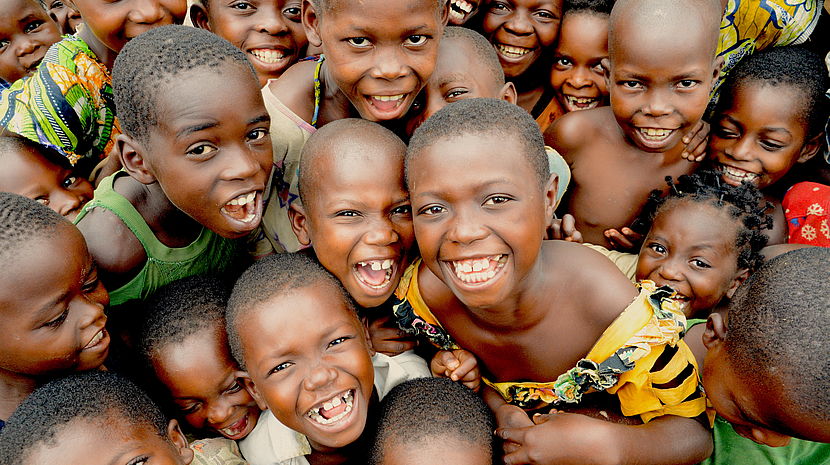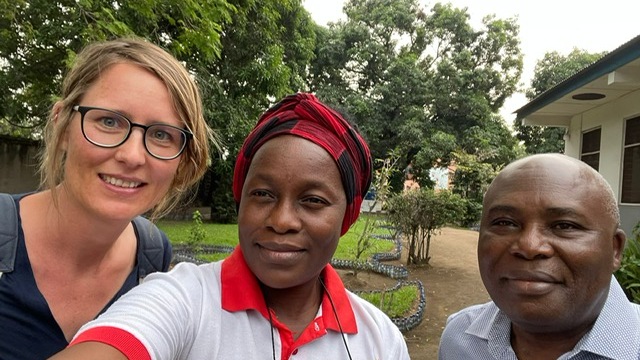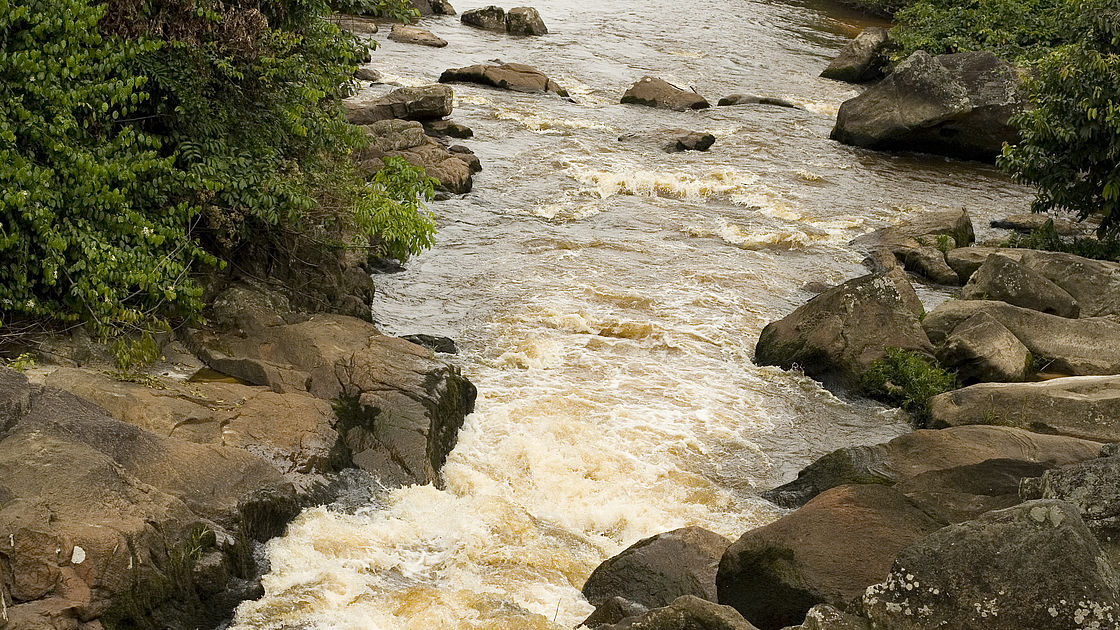Of Bonobo Monkeys and Buckets of Sand:
Sights of Kinshasa by Julia Achatzi, CBM's Inclusive Eye Health Programme Manager

©CBM
There is so much to do and what we can do feels like a drop in the ocean. But thanks to this project, 300 children will have bilateral cataract surgery by the end of this year. That's 300 children who can see, who did not before. They can play, they can go to school, they can participate.
My most immediate impression when I stepped off the plane was the extraordinary humidity, which coming from Germany, felt extreme. Then I became aware of the noise and vibrancy of my surroundings - the hustle and bustle of people and vehicles. The sheer volume of traffic in Kinshasa is incredible and you can get stuck in huge traffic jams anywhere at any time.
It was my first visit to Kinshasa, DR Congo. I was on a monitoring visit to a children's eye care project that we are implementing in partnership with the University of Rostock with funding from the Else-Kröner- Fresenius Foundation (EKFS). The implementing partners are St. Joseph's Hospital in Kinshasa and RAC, an organisation that identifies children in need of cataract surgery with the help of volunteers and community workers.
The CBM country office had prepared everything very well for my visit. I was picked up at the airport and taken to a hotel that was amazingly quiet. It was a real pleasure to meet my colleagues from our country office in person. I have sat in so many online meetings with them, but laughing together in one room makes the work much more pleasant.

Julia with CBM Country Programme Officer Marie-Jose and National Inclusive Eye health Advisor Kilangalanga
I spent most of my visit talking to partners and observing activities to see how the project is going. We discussed the challenges and jointly identified ways to improve. Seeing the faces of the staff of our partner organisations at work, being shown the young mothers and children on the ward of the eye hospital, the infrastructure and understanding a little of the journey of the patients during their examination and surgery at St Joseph's Hospital made a big difference.
Before I arrived in Kinshasha, the project was just an idea in my head and now there were faces and stories behind the theory. I understand some of the challenges much better now after discussing them with all the stakeholders. In general, the DRC is very under-resourced when it comes to overall health care and given the stretched budgets, eye care is at the bottom of the priority list. There are not enough eye care staff at all levels and yet the demand is high.
When I saw the long queue of patients waiting in the heat and the teenage mothers sleeping with their little children in a crowded ward, the need became very clear to me. In Kinshasa, there are many children with cataracts and other eye problems - and there are not many hospitals that serve communities that cannot afford the cost of eye treatment. The particular aim of this visit was to have discussions with our eye health advisor about the quality of processes and services and to strengthen collaboration.
Our partner RAC goes into the communities and identifies children who need cataract surgery. Volunteers then accompany the children and their mothers to the hospital. Bilateral cataracts are often genetic, so in some families more than one child may be affected, and children with bilateral cataracts often have other disabilities as well. Most parents, often young mothers, have never been to a medical facility and are afraid to take their children to hospital. They do not have the means to pay for the treatment. The fact that the volunteers accompany them during the examination and stay in the hospital is very helpful for them. The project covers the cost of the treatment and is often the only chance for their children to get the surgery they need.
A visit to the sanctuary for Bonobo monkeys

When I realise it was a national holiday on the second day I was there, I took the morning off to visit just outside the city. As I was visiting at the end of the rainy season, the vegetation was lush and the rivers were not placid like the ones at home, but wide and wild. I was impressed by the men who worked all day, every day, gathering wet sand in huge buckets from the bottom of the river and carrying the enormous loads on their shoulders to use in construction work. We take it for granted that such tasks are done by machines, but in Congo this back breaking work is done without machines - which is shocking to see.
Hope for The 300
When I return to Kinshasa, I hope to see even stronger collaboration between our partners. I would also love to see the identification, treatment and follow-up of children integrated into the regular activities of our partners - not just as a short-term measure within the project. Change is hard to bring about, but we need to figure out how we can make systems even more effective and sustainable.
During my visit, we met a little girl named Noella who suffers from bilateral cataracts and other disabilities. She is now to be hospitalised for surgery and her other needs will be addressed by our partner RAC and funded through another organisation. It is difficult to describe what I feel when I see such interventions.
Of course, I feel compassion, but part of me always stays apart because I live so far away and am not directly involved in the work. It is perhaps a coping mechanism. There is so much to do and what we are able to do feels like a drop in the ocean. But thanks to this project and the support of EKFS and the University of Rostock, 300 children will have bilateral cataract surgery by the end of this year. That's 300 children who can see, who did not before. They can play, they can go to school, they can participate.